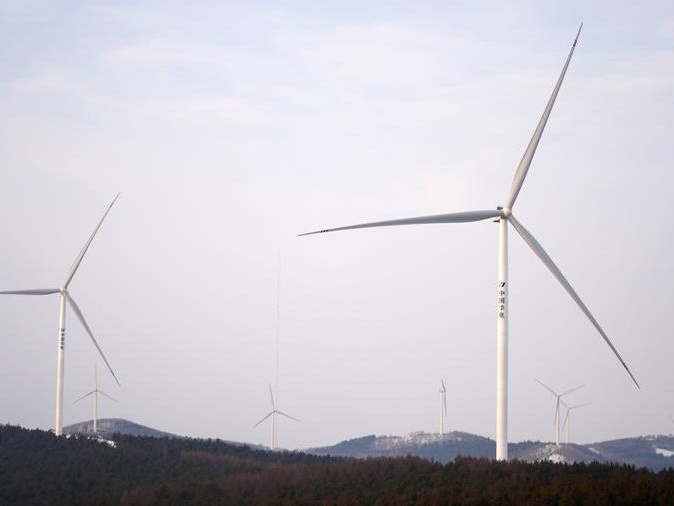
This photo taken on Dec. 5, 2023 shows wind turbines in operation in Yilan County, northeast China's Heilongjiang Province. (Xinhua/Wang Jianwei)
BEIJING, July 14 (Xinhua) -- Several provincial regions across China reported robust trade in green electricity and green certificates during the first half of 2024, amid the country's drive to deliver on its dual carbon promises.
Experts cited growing demand for both domestic and global enterprises to reduce emissions, coupled with policy facilitation, as causes to drive the increasingly brisk trade.
Among the provincial regions that registered surges in the trading volume of green electricity, northwest China's Xinjiang Uygur Autonomous Region saw 860 million kilowatt-hours (kWh) of green electricity transacted during the first half of this year. This figure marks an increase of two times compared to the entire year of 2023.
Moreover, electricity users in Xinjiang had purchased more than 1.44 million green certificates during the first six months, 3.5 times the volume recorded in the same period last year.
In northeast China's Heilongjiang Province, the transaction volume of green electricity in the first six months had reached 741 million kWh, including 686 million kWh of wind power and 55 million kWh of photovoltaics, a surge of 5.3 times compared with the entire year of 2023.
Additionally, the first six months saw over 5.15 million green certificates transacted in the northeastern province, about 1.22 million more than the volume throughout 2023.
In Shanghai, over 15 million green certificates had been transacted from January to early June, a steep rise from the annual volume of 460,000 in 2023.
Power users can achieve green electricity consumption through green electricity trading or purchasing green certificates.
Green electricity refers to electricity with zero or near-zero carbon dioxide emissions during its production process. This is crucial for a company's journey toward achieving carbon neutrality and for transforming and upgrading the entire industry.
Buyers of green electricity will also obtain a green certificate as proof. Each government-issued certificate represents 1,000 kWh of electricity generated from renewable energy.
Green electricity and certificate trading offer enterprises opportunities to achieve energy conservation and emission reduction targets while promoting renewable energy consumption, said Zhao Pengfei, staff member at Shanghai Power Exchange Center Company Ltd.
The sharp increase in the trading volume underlines the constant improvement of relevant policies and mechanisms, as well as enterprises' growing awareness for energy conservation and emission reduction, Zhao noted.
After China set the dual carbon goals, more enterprises have started to consider social responsibilities, said Zhang Da, an associate professor at the Institute of Energy, Environment and Economy, Tsinghua University. Zhang said that companies are encouraged to participate in green electricity trading to help achieve governments' energy conservation and emission reduction goals.
Globally, as some multinationals have committed to achieving carbon reduction targets, their China branches and companies on their supply chains are urged to procure renewable energies, according to Zhang.
The green electricity trading will, from the consumption side, boost demand for renewable energies and offer financial support to renewable energy sectors, thereby facilitating the country's drive to reach its dual carbon goals, Zhang noted.
China is committed to the dual carbon goals of peaking carbon emissions by 2030 and achieving carbon neutrality by 2060.




 A single purchase
A single purchase









